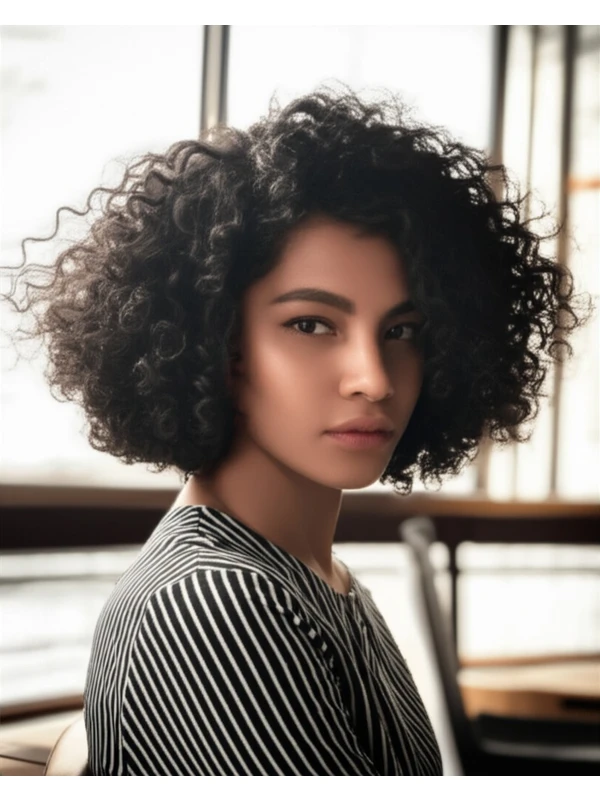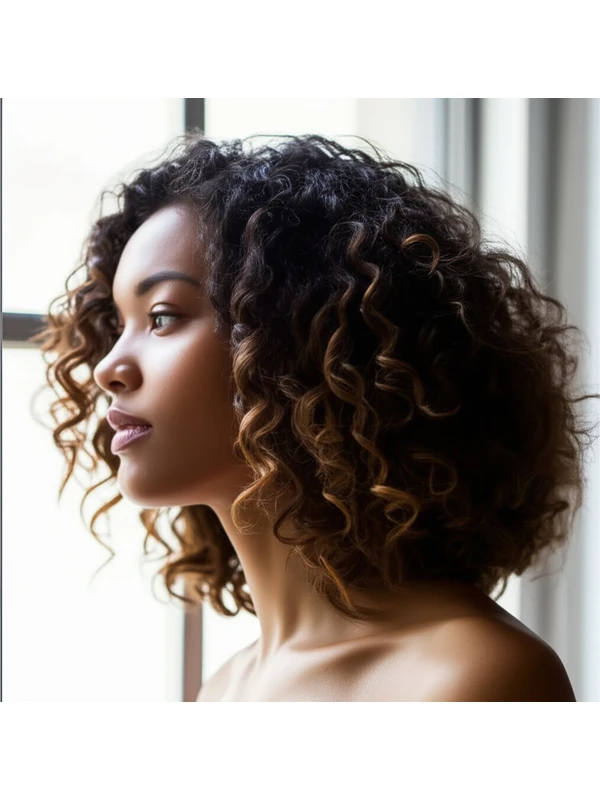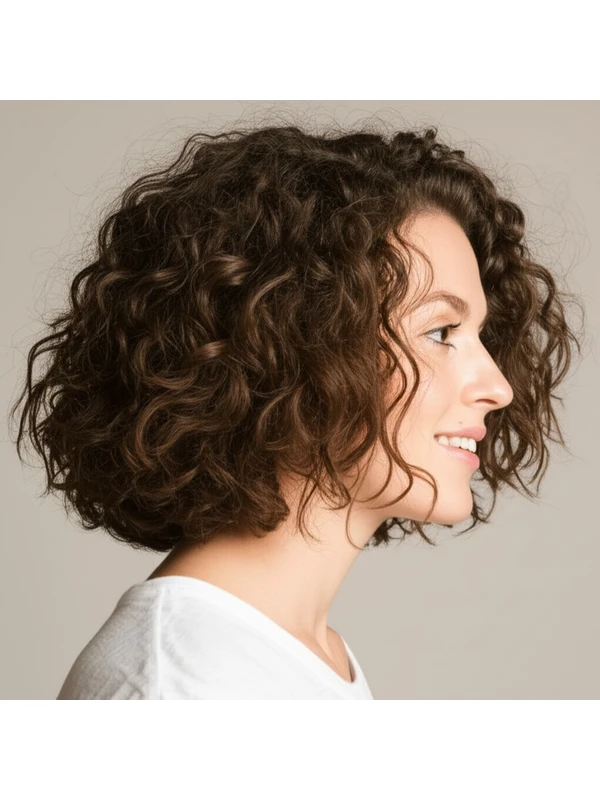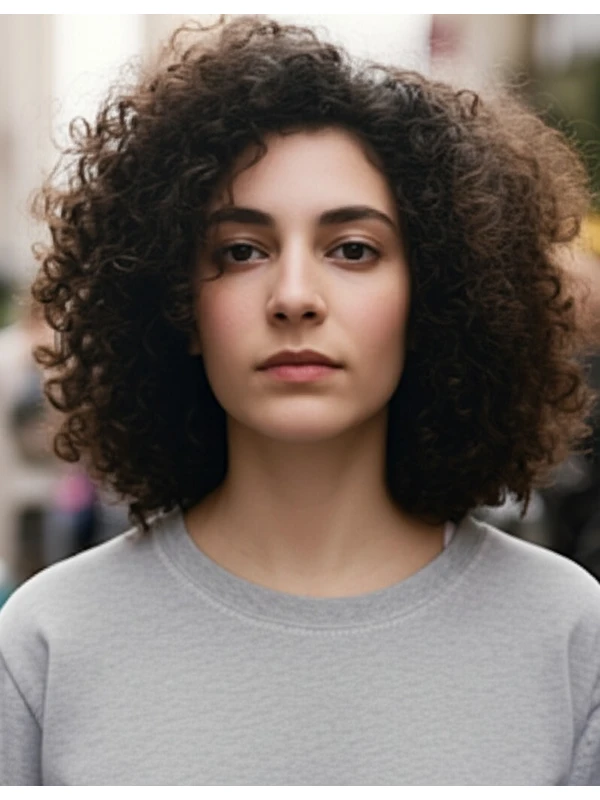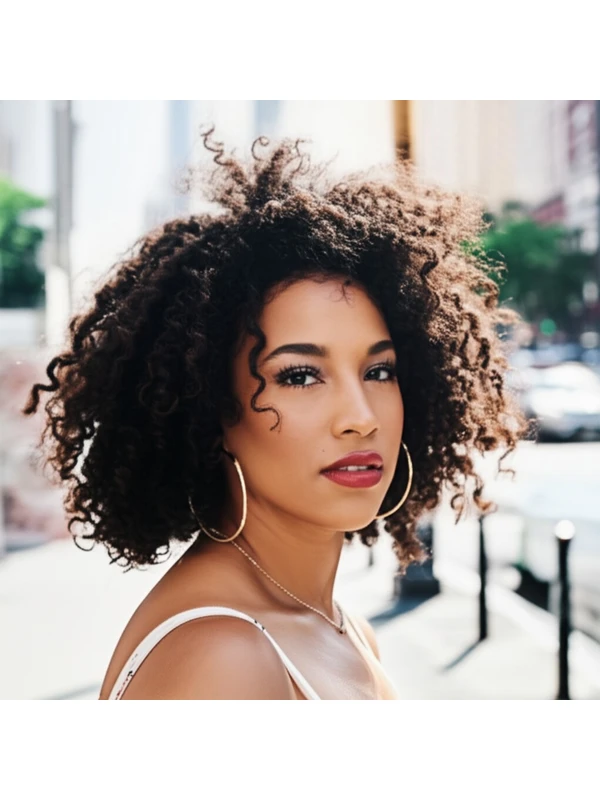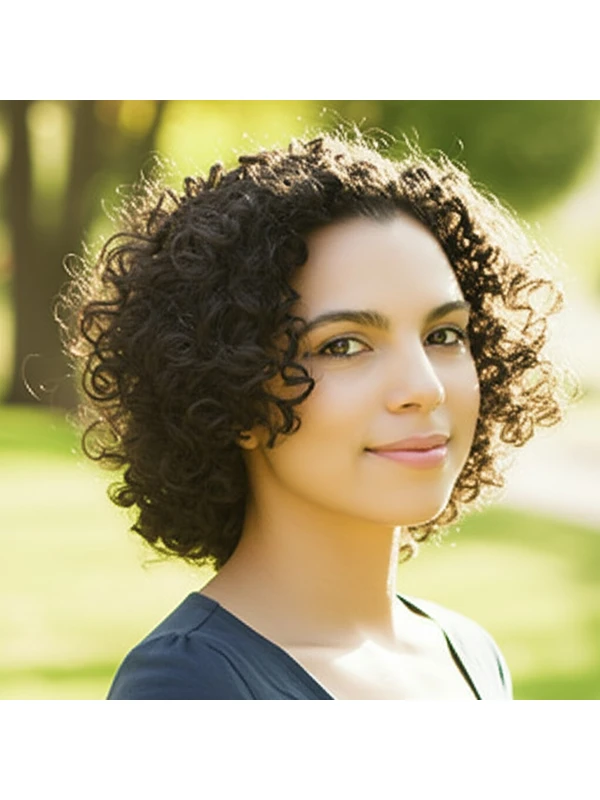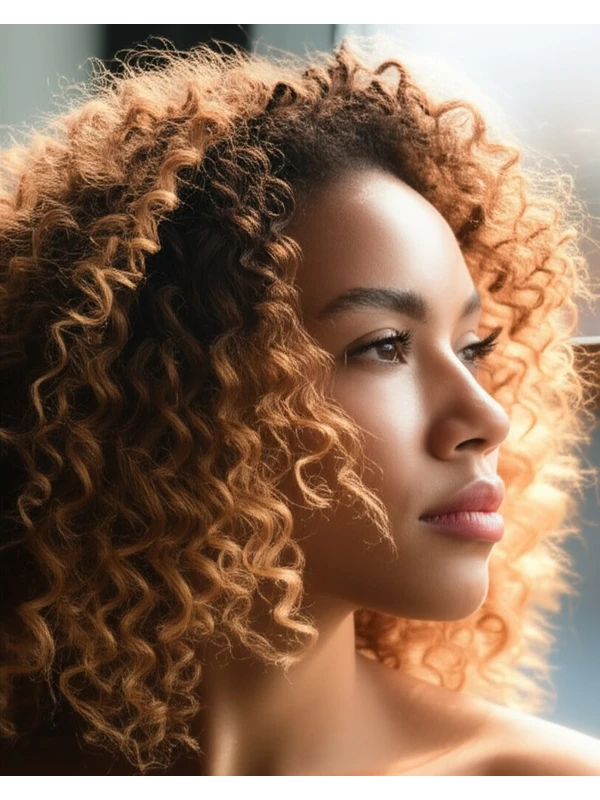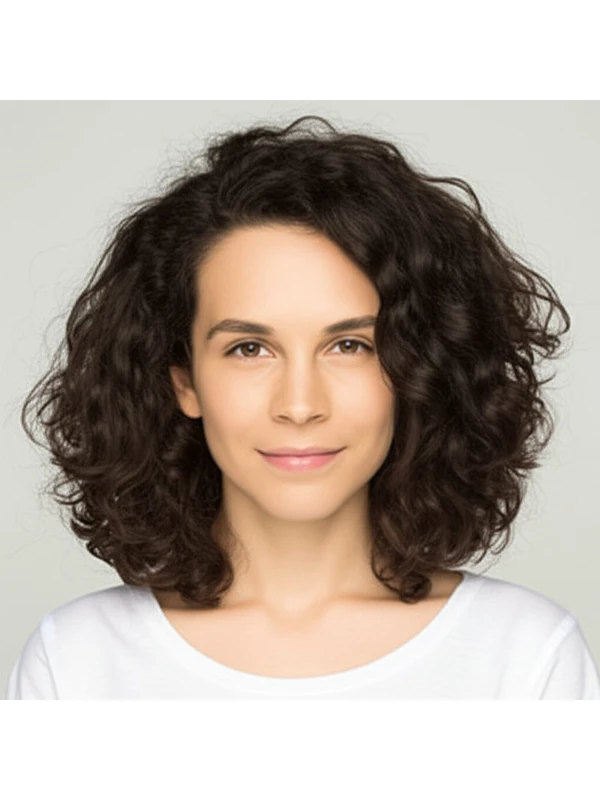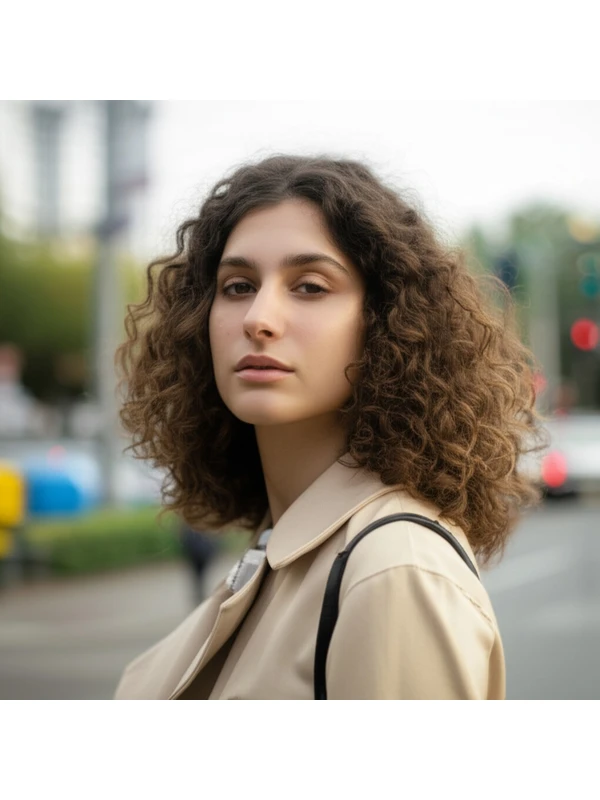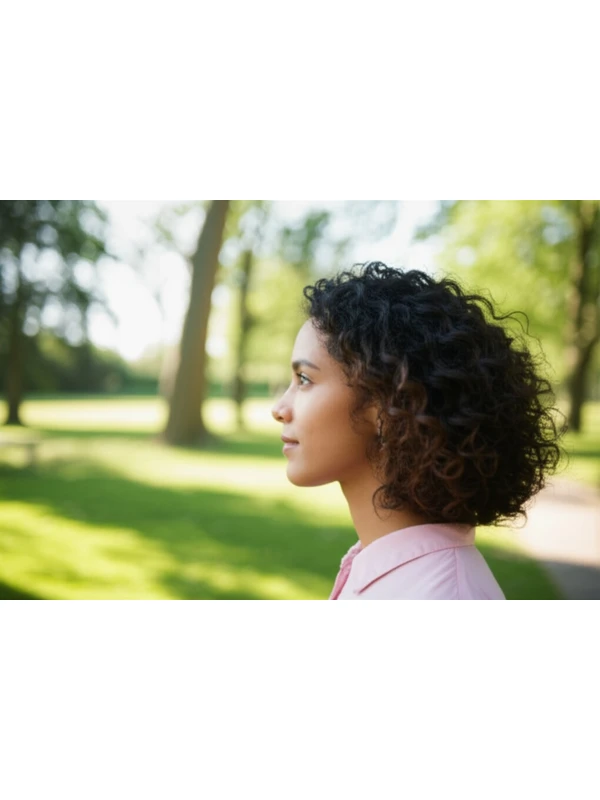#Big Curls: A Guide to Volume & Bounce
Big curls are a statement! They’re about embracing your natural texture with maximum volume and definition. This style isn't just about having curly hair; it's about showcasing its best qualities – the bounce, the movement, and that undeniable feeling of confidence. Let's dive into everything you need to know to rock this look.
#1) Background & Definition: What Are Big Curls?
Big curls are a hairstyle emphasizing volume and defined curl patterns. The cut itself is typically layered, with shorter pieces around the face and progressively longer layers throughout the hair. This layering removes weight, allowing natural curls or waves to spring up and create that "big" look.
- Cut Geometry: Layers are key! They’re strategically placed to lift at the roots and encourage curl formation. The shortest layer often frames the face.
- Key Features: Volume at the crown, defined ringlets/waves (depending on natural texture), a playful and bouncy feel, movement and lightness.
- Typical Length Ranges: Mid-length (shoulder-length or slightly longer) is most common to showcase volume effectively. However, it can work anywhere from chin length (a curly bob) to long hair with strategic layering.
- Alternative Names: Curly voluminous cut, layered curls, bouncy curl style, natural curl enhancement.
#2) Face Shape Fit: Finding Your Best Angle
The beauty of big curls is their versatility, but understanding how they interact with your face shape can maximize the impact.
- Oval: Lucky you! Big curls generally flatter oval faces beautifully. The volume balances proportions perfectly. A side-swept fringe softens any angularity.
- Round: Big curls add height and draw the eye upward, slimming a round face. Avoid too much volume at the cheeks; focus on crown lift. A long, wispy fringe can elongate the face.
- Square: Softening is key! Big curls soften sharp angles. Layers around the jawline are crucial to avoid emphasizing squareness. A feathered or textured fringe adds softness.
- Heart: Volume at the chin and jawline balances a wider forehead in heart-shaped faces. Avoid too much volume on top, which can make your face appear even wider. A side-swept fringe is generally flattering.
- Diamond: Big curls highlight cheekbones and soften the angles of diamond shapes. A full or choppy fringe can balance width at the forehead and jawline.
- Oblong (Long): Width is needed! Big curls add visual width, making a long face appear more balanced. Avoid extreme height to prevent elongating further. A blunt, straight-across fringe can shorten the appearance of the face.
#3) Body Proportions & Height Guidance: Styling for Your Silhouette
The placement and amount of volume in big curls impact your overall silhouette.
- Petite: Shorter to mid-length styles work best. Too much length or volume can overwhelm a smaller frame. Focus on lift at the crown rather than all-over fullness.
- Average Height: Most lengths and volumes are flattering! Experiment with different placements of volume to find what you love.
- Tall: Longer big curls enhance height, but be mindful of avoiding an overly elongated look. Strategic layering can prevent hair from looking stringy.
- Narrow Shoulders: Volume at the shoulders creates a more balanced appearance. Avoid styles that fall flat against the body.
- Broad Shoulders: Focus volume towards the crown and face to draw attention upward, away from shoulder width. Avoid excessive volume around the shoulders themselves.
- Short Neck: Mid-length styles are generally best. Shorter layers around the face can help elongate the neck visually.
- Long Neck: Longer big curls balance a longer neck. Volume at the sides adds visual width and proportion.
#4) Works Best With Hair Types & Densities: Understanding Your Texture
Big curls aren't just for those with naturally curly hair! They can be adapted to enhance waves too.
- Straight Hair (Type 1): Requires more styling effort – using curling irons or hot rollers is often needed to achieve the desired curl pattern and volume. Lots of layering is essential to create lift.
- Wavy Hair (Type 2): Big curls can enhance natural waves, creating a more defined and voluminous look. Layering helps encourage wave formation.
- Curly Hair (Type 3): This style shines! The layers release the natural curl pattern, resulting in bouncy, defined curls.
- Coily Hair (Type 4): Big curls amplify coils, creating dramatic volume and definition. Moisture is critical. Shrinkage will be significant – what looks like mid-length in the salon might end up being chin-length when dry.
- Fine Hair: Layering is essential to create volume without looking thin. Avoid heavy conditioners that can weigh hair down.
- Medium Hair: Big curls work beautifully! The layers provide structure and definition.
- Thick Hair: Strategic layering removes weight, preventing the style from becoming too bulky. Consider point-cutting for a softer look.
- Shrinkage Factor: Coily and curly hair types experience significant shrinkage. Discuss desired length with your stylist after accounting for this.
#5) Styling Variations: From Casual to Evening Glam
Big curls are incredibly versatile!
- Sleek vs. Textured: Sleeker styles use smoothing products, while textured styles embrace natural frizz and definition.
- Middle vs. Side Part: A side part adds asymmetry and volume at the roots; a middle part creates balance.
- Fringe Variations: Wispy, feathered, blunt, or side-swept – experiment to find what suits your face shape best.
- Occasion Styling:
- Casual: Air-dry with curl cream for effortless definition.
- Office: Smooth and defined curls with a serum for a polished look.
- Evening: Add volume at the roots using mousse, then define curls with gel or wax.
#6) Maintenance: Keeping Your Curls Happy & Bouncy
- Trim Cadence: Every 6-8 weeks to maintain shape and remove split ends. More frequent trims may be needed for coily hair.
- At-Home Routine: Focus on moisture! Deep condition weekly.
- Heat vs. Air-Dry: Minimize heat styling to preserve curl health. When using heat, always use a protectant spray.
- Product Checklist:
- Shampoo & Conditioner (moisturizing)
- Leave-in Conditioner (essential for hydration)
- Curl Cream/Gel/Mousse (for definition and hold)
- Hair Oil or Serum (to seal in moisture and add shine)
- Estimated Daily Styling Time: 15-45 minutes, depending on hair type and desired style.
#7) Grow-Out Roadmap: Evolving Your Look
- Months 1-3: The initial shape is most defined. Regular trims maintain the layers.
- Months 3-6: Layers may start to blend together slightly. Consider a shaping trim to refine the look and prevent it from becoming too heavy.
- Maintaining Shape: Communicate with your stylist about how you’re styling at home so they can adjust the cut accordingly.
#8) Color Pairings: Enhancing Your Curls
- Warm Undertones (Golden, Peach): Honey blonde, caramel highlights, copper tones.
- Cool Undertones (Pink, Blue): Ash brown, cool beige blonde, silver/grey accents.
- Low-Commitment Options: Balayage or babylights add dimension without a harsh root line.
#9) Season & Occasion Guide: Adapting Your Style
- Spring/Summer: Lighter highlights and looser curls for a fresh, airy feel.
- Fall/Winter: Richer tones (like caramel or chocolate brown) and more defined curls for warmth and drama.
- Work: Sleek, polished styles with controlled volume.
- Weddings/Parties: Embrace the full volume! Experiment with updos incorporating big curls.
#10) Cost & Time: What to Expect at the Salon
- Salon Time: Typically 1.5-3 hours, depending on hair length and complexity of layering.
- Estimated Price Range: Relatively higher than simpler cuts – expect a range from slightly above average to significantly more expensive, depending on stylist experience and location.
#11) Pros & Cons: The Real Deal
Pros: Voluminous, playful, flattering (with the right adjustments), showcases natural texture. Cons: Can be time-consuming to style, requires regular trims, may require product investment, can appear "too much" if not styled correctly.
#12) Salon Consultation Script: Questions to Ask
- “I love the look of big curls! Could you assess my hair type and face shape to determine if this is a good fit?”
- “How many layers will I need for optimal volume, given my hair density and length?”
- "Can we discuss how shrinkage will affect the final length?"
- “What styling products do you recommend for my curl type and desired look?”
- “Could you show me examples of big curls on people with similar face shapes/hair types to mine?”
#FAQs: Your Burning Questions Answered
- Can I achieve this style if I don’t have naturally curly hair? Yes! With the right layering and styling techniques, even straight or wavy hair can mimic the look of big curls.
- How do I prevent frizz when styling big curls? Use a microfiber towel to dry your hair gently, apply leave-in conditioner, and avoid excessive heat.
- Will this style make my hair look thinner? Not necessarily! Strategic layering can actually create the illusion of thickness.
- How do I get volume at the roots? Use a volumizing mousse or root lifter before styling. Flip your head upside down while drying to encourage lift.
- Is this style suitable for all ages? Absolutely! It's about adapting the cut and styling to suit individual preferences and lifestyle.
- How can I make big curls look more professional for work? Smooth out frizz, define curl clumps neatly, and avoid excessive volume at the crown.
Enjoy your journey into the world of big, beautiful curls!
